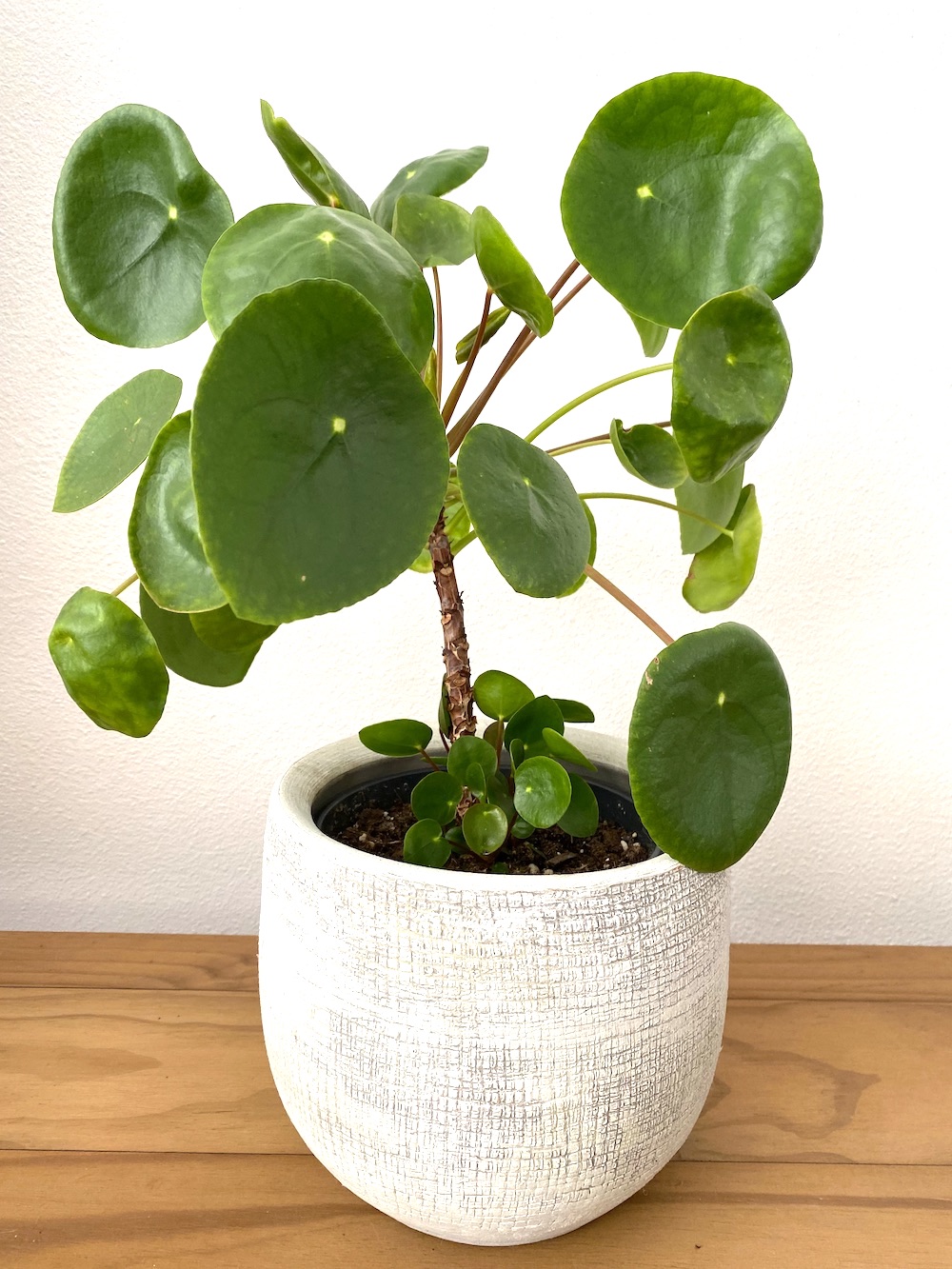Plants

Pilea peperomioides
A very popular house plant with its flat, pancake-shaped leaves and long petioles attached to a tree-like stem. They belong to the stinging nettle plant and sometimes have fine hairs that can irritate the skin.
It likes filtered light and by rotating the plant every week will keep your plant stem growing strong and upright. Stake if the stem requires help to support all the leaves. Keep the soil moist but not water-logged (good draining) and water when the topsoil is dry. Fertilise in spring and mid-summer with slow release or liquid fertilizer. Finding the right place for pilea can be a challenge as growing your pilea in low light can result in upward curling leaves and sometimes have a purplish underside of leaves and too much light can cause the downward curling leaves. So when its found its happy place, leave it there. Inconsistent watering can cause small and distorted leaves. Yellow older leaves are natural, but if excessive, it may be water-logged roots or needing fertilizer. Propagation is done by carefully cutting off the baby plants when they are about 5 cm high.
Prone to thrips, aphids or fungal disease
Other plants
“To plant a garden is to believe in tomorrow”
Audrey Hepburn